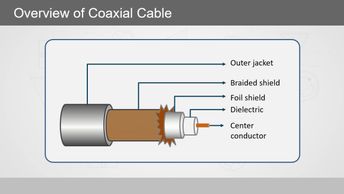Examine the most common cable types and adapters encountered when working with computers and mobile devices, including network, video, multipurpose, peripheral, and hard drive cables. In this course, begin by learning about different Ethernet cable types such as Cat5, Cat5e, Cat6, Plenum, and 568A/B. Next, examine at the differences between shielded twisted pair and unshielded twisted pair cabling. Learn the basics of fiber optic cabling and coaxial cable. Look at some of the speed and transmission limitations of different network cables. Learners explore different video cables: VGA (Video Graphics Array); High Definition Multimedia Interface (HDMI); mini HDMI; DisplayPort; the Digital Visual Interface (DVI), and DVI-D/DVI-I. Learn about using Lightning and Thunderbolt cables. Examine Universal Serial Bus (USB) cables and the differences between USB, USB-C, USB2.0, and USB3.0. Then serial peripheral cables and hard drive cables such as SATA (Serial AT Attachment), IDE (Integrated Drive Electronics), and SCSI (Small Computer System Interface). Differentiate between adapters such as DVI to HDMI, USB to Ethernet, and DVI to VGA. A concluding exercise reviews working with network cables. This course can be used to help prepare for the 220-1001: CompTIA A+ certification exam.
| Objectives |
|---|
CompTIA A+ 220-1001: Basic Cable Types
|


